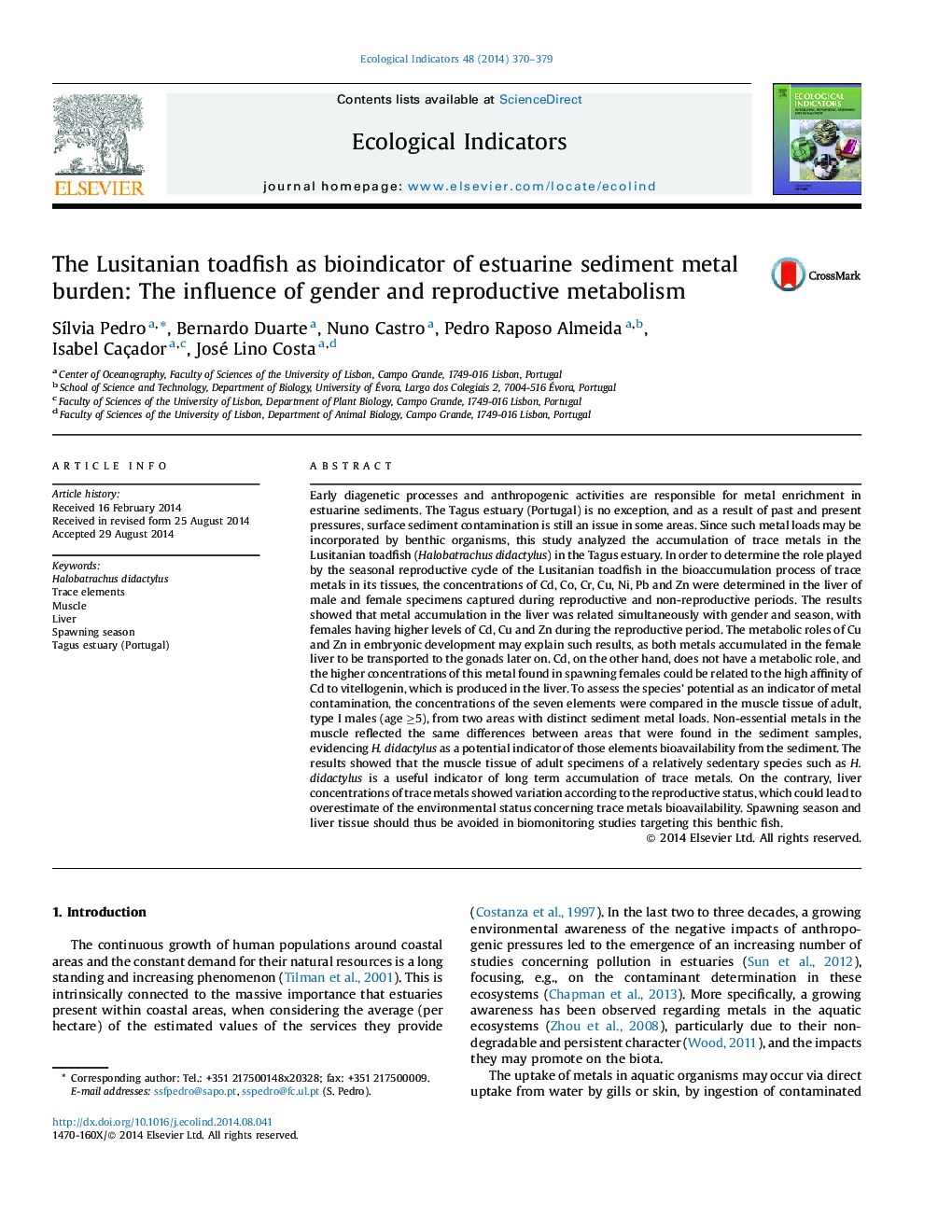| Article ID | Journal | Published Year | Pages | File Type |
|---|---|---|---|---|
| 6295039 | Ecological Indicators | 2015 | 10 Pages |
Abstract
Early diagenetic processes and anthropogenic activities are responsible for metal enrichment in estuarine sediments. The Tagus estuary (Portugal) is no exception, and as a result of past and present pressures, surface sediment contamination is still an issue in some areas. Since such metal loads may be incorporated by benthic organisms, this study analyzed the accumulation of trace metals in the Lusitanian toadfish (Halobatrachus didactylus) in the Tagus estuary. In order to determine the role played by the seasonal reproductive cycle of the Lusitanian toadfish in the bioaccumulation process of trace metals in its tissues, the concentrations of Cd, Co, Cr, Cu, Ni, Pb and Zn were determined in the liver of male and female specimens captured during reproductive and non-reproductive periods. The results showed that metal accumulation in the liver was related simultaneously with gender and season, with females having higher levels of Cd, Cu and Zn during the reproductive period. The metabolic roles of Cu and Zn in embryonic development may explain such results, as both metals accumulated in the female liver to be transported to the gonads later on. Cd, on the other hand, does not have a metabolic role, and the higher concentrations of this metal found in spawning females could be related to the high affinity of Cd to vitellogenin, which is produced in the liver. To assess the species' potential as an indicator of metal contamination, the concentrations of the seven elements were compared in the muscle tissue of adult, type I males (age â¥5), from two areas with distinct sediment metal loads. Non-essential metals in the muscle reflected the same differences between areas that were found in the sediment samples, evidencing H. didactylus as a potential indicator of those elements bioavailability from the sediment. The results showed that the muscle tissue of adult specimens of a relatively sedentary species such as H. didactylus is a useful indicator of long term accumulation of trace metals. On the contrary, liver concentrations of trace metals showed variation according to the reproductive status, which could lead to overestimate of the environmental status concerning trace metals bioavailability. Spawning season and liver tissue should thus be avoided in biomonitoring studies targeting this benthic fish.
Related Topics
Life Sciences
Agricultural and Biological Sciences
Ecology, Evolution, Behavior and Systematics
Authors
SÃlvia Pedro, Bernardo Duarte, Nuno Castro, Pedro Raposo Almeida, Isabel Caçador, José Lino Costa,
